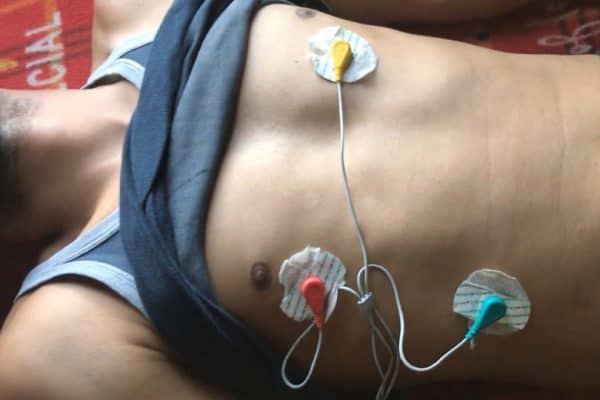Overview
Heart diseases are becoming a big issue for the last few decades and many people die because of certain health problems. Therefore, heart disease cannot be taken lightly. So there should be a technology that can monitor the heart rate and heart behavior of the patient regularly. By analyzing or monitoring the ECG signal at the initial stage the various heart disease can be prevented. This is the reason why I am presenting you with this great IoT project. In this project, I will show you how you can interface AD8232 ECG Sensor with NodeMCU ESP8266 Board and monitor the ECG Waveform on Serial Plotter Screen. Similarly, you can send the ECG waveform over the IoT Cloud platform and monitor the signal online from any part of the world using the PC or simply using the Smartphone. There is no need for staying in the Hospital to monitor heart activity/behavior just because you can monitor it online from anywhere. Thus it can be said advancement in Patient Health Monitoring System. The IoT platform that I am gonna use here is Ubidots. Ubidots is an IoT Platform empowering innovators and industries to prototype and scale IoT projects to production. Use the Ubidots platform to send data to the cloud from any Internet-enabled device. You can then configure actions and alerts based on your real-time data and unlock the value of your data through visual tools.
Electrical:
The AD8232 is an integrated signal conditioning block for ECG and other biopotential measurement applications. It is designed to extract, amplify, and filter small biopotential signals in the presence of noisy conditions, such as those created by motion or remote electrode placement. The AD8232 module breaks out nine connections from the IC that you can solder pins, wires, or other connectors to. SDN, LO+, LO-, OUTPUT, 3.3V, GND provide essential pins for operating this monitor with an Arduino or other development board. Also provided on this board are RA (Right Arm), LA (Left Arm), and RL (Right Leg) pins to attach and use your own custom sensors. Additionally, there is an LED indicator light that will pulsate to the rhythm of a heartbeat.
Circuit Diagram: Interfacing AD8232 ECG Sensor with NodeMCU ESP8266
Here is a circuit digram for Interfacing AD8232 ECG Sensor with NodeMCU ESP8266. There are 6 pins in AD8232 Breakout Board. SDN is not connected. Connect the OUTPUT to analog A0 of Nodemcu. Connect the LO+ & LO- to D5 & D6 of NodeMCU respectively. Supply the AD8232 kit with 3.3V VCC & Connect its GND to GND.
Red: RA (Right Arm) Yellow: LA (Left Arm) Green: RL (Right Leg)








